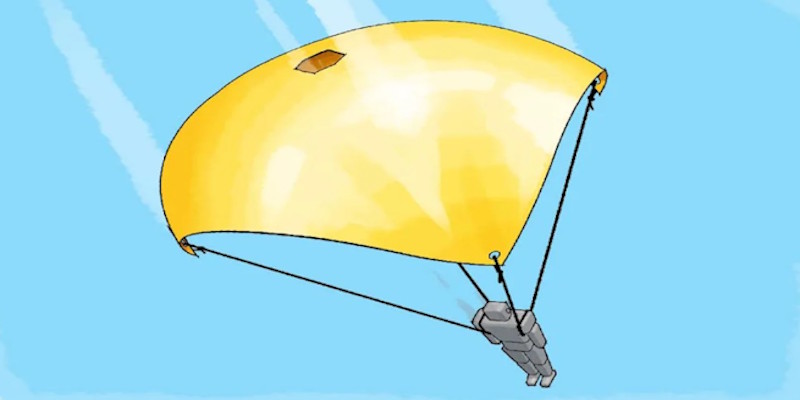Parachutes have helped people travel safely from the sky for centuries. Skydivers depend on them, engineers rely on them when bringing space capsules back to Earth and they are used to drop vital supplies, and. A parachute works by catching air and slowing a falling object, so it reaches the ground gently. In this activity you will build your own parachute using a sheet of newspaper and test how slowly you can make it fall.
Challenge
Safety Instructions
Always have a teacher or supervising adult present when dropping your parachute from a height, especially if you are using a chair, staircase, or any raised platform. Make sure the drop zone is clear of people and obstacles before each test so no one gets hurt. When you release your parachute, let it fall straight down and do not throw it outward or sideways.
Problem Statement
Your challenge is to build a parachute using only one sheet of newspaper as the canopy. You can choose the shape and decide how much of the sheet you want to use, but you cannot tape multiple sheets together.
Attach a small paper cup to the parachute. The cup must carry a fixed weight of about 100 grams during every test. Your goal is to design a parachute that stays in the air for the longest possible time when dropped from a set height.
You can experiment with:
-
the shape of the canopy
-
how much of the newspaper sheet you use
-
the number of strings
-
the length of the strings
-
where you attach the strings to the canopy and to the cup
-
how you fold or release the parachute
Testing Your Design
To test your design, choose a fixed height and use the same spot for every trial. Hold your parachute at the top of the canopy so the paper cup hangs freely, then let go gently without pushing it. Use a stopwatch to record how long it stays in the air until the cup touches the ground. Repeat the test at least three times for each version of your parachute. Make small changes to your design, test again, and compare the results to see which changes helped improve the flight time.
Reflect and Discuss
-
Which design features helped your parachute stay in the air the longest?
-
How did changes in canopy size or shape affect the way your parachute moved?
-
What happened when you changed the length or number of strings?
-
As an extension, how would you modify your design if the parachute had to protect a raw egg instead of holding a fixed weight?

